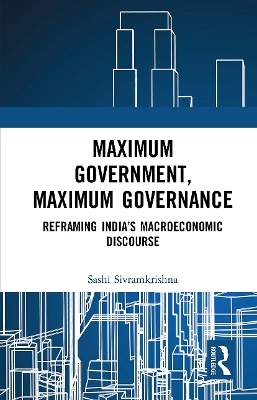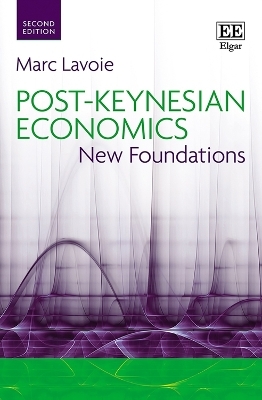
Maximum Government, Maximum Governance
Routledge (Verlag)
978-1-032-65399-0 (ISBN)
Austerity, fiscal consolidation, fiscal discipline and fiscal deficit targets have become the buzzwords of contemporary macroeconomic policy. By tracing the history of macroeconomic schools of thought, Maximum Government, Maximum Governance explores the origins, essence, shortcomings and deception of mainstream neoliberal macroeconomics. Arguing that economies are financially constrained, neoliberal macroeconomics dislodged full employment as the target of policy replacing it with a low and stable inflation target. Monetary policy under the control of an independent central bank became the primary instrument to assist free and globalized markets to propel economies towards full employment. However, the global financial crisis of 2008 and rising inequalities of income and wealth in the last decade within and across economies has led to rise of nationalist-populist leaders in many parts of the world. Although neoliberal economics has been put under the scanner by these leaders, their actions seem reactionary and without a coherent understanding of alternative schools of economic thought. An alternative based on sound economic reasoning and institutional realities is required to challenge neoliberal and arbitrary populist policies.
Based on an introductory analysis of Modern Money Theory (MMT), this book seeks to present an alternative viewpoint on macroeconomics and macroeconomic policy to address the challenges of economic growth, unemployment and inequality. While adherents of MMT are convinced of its robustness, the challenge is to reframe macroeconomic discourse, which must essentially reject the notion that an economy is financially constrained and instead turn the spotlight on real resource and governance constraints.
Please note: Taylor & Francis does not sell or distribute the Hardback in India, Pakistan, Nepal, Bhutan, Bangladesh and Sri Lanka
Sashi Sivramkrishna (Ph.D., Cornell) is presently with Kautilya Entrepreneurship & Management Institute (KEMI) and Foundation to Aid Industrial Recovery (FAIR), Bengaluru.
Introduction Part I: Mainstream Macroeconomic Discourse 1. Economics and Macroeconomics 2. The Classical and Keynesian Macroeconomic Paradigms 3. The Neo-Keynesian Paradigm 4. Monetarism and the Decline of Neo Keynesianism 5. The ‘New’ Macroeconomics 6. From Stabilization to Growth and Development 7. A Summary of Neoliberal Macroeconomics Part II: Popular Macroeconomics Discourse in India 8. Putting India’s Current Macroeconomic Policies in Perspective 9. India’s Neoliberal Policy Framework Part III: Modern Money Theory (MMT) 10. Modern Money and Economic Sovereignty 11. Fiscal Deficits in a Modern Money Economy 12. The Hierarchy of Money 13. Banking and Endogenous Money Theory 14. Monetary Policy in the MMT Framework 15. The Sectoral Financial Balances (SFB) Model 16. A Summary of Insights from MMT Part IV: Reframing India’s Macroeconomic Discourse 17. Maximum Government, Maximum Governance
| Erscheinungsdatum | 22.08.2024 |
|---|---|
| Verlagsort | London |
| Sprache | englisch |
| Maße | 138 x 216 mm |
| Gewicht | 294 g |
| Themenwelt | Wirtschaft ► Allgemeines / Lexika |
| Wirtschaft ► Volkswirtschaftslehre ► Finanzwissenschaft | |
| ISBN-10 | 1-032-65399-X / 103265399X |
| ISBN-13 | 978-1-032-65399-0 / 9781032653990 |
| Zustand | Neuware |
| Informationen gemäß Produktsicherheitsverordnung (GPSR) | |
| Haben Sie eine Frage zum Produkt? |
aus dem Bereich


